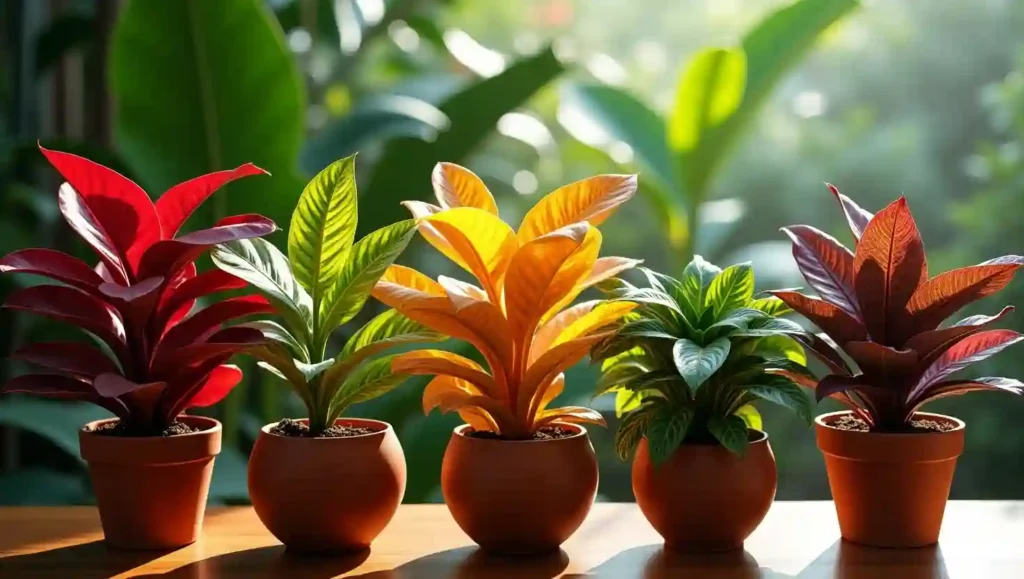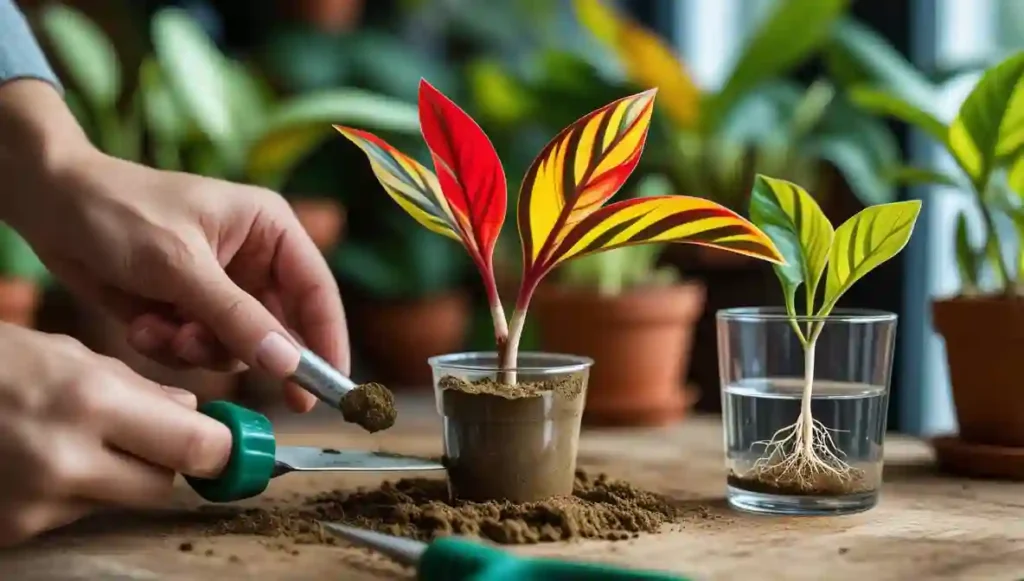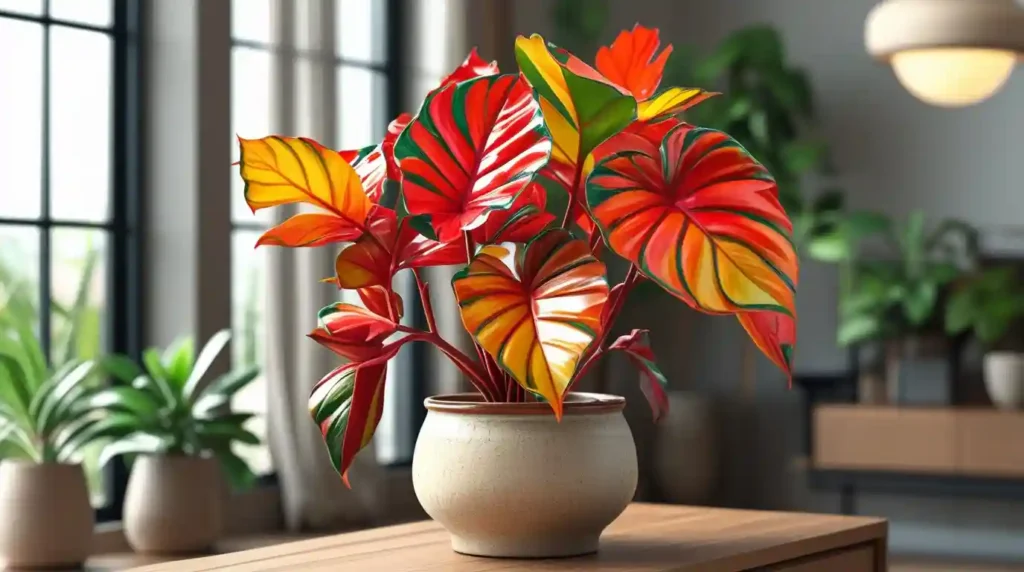Croton plant is one of the most stunning house plants, loved by its stunning foliage and striking colors. It doesn’t matter if you’re an experienced gardener or are just beginning to bring a splash of color to your house the croton is the perfect option. It is not just a great addition to the outdoor and indoor spaces, but it also requires little maintenance when it is in the proper conditions.
In this article, we’ll look into all you should to learn about the Croton plant including its varieties and care requirements, the advantages, and ways to solve common issues.
What is a Croton Plant?
The Croton plant (Codiaeum variegatum) is a tropical tree that is native to Southeast Asia and the Pacific Islands. Moreover, It is most well-known for its large, glossy leaves, which display a mixture of yellow, red, green, orange, and even shades of purple. The plants are part of the Euphorbiaceae family, and are usually used as houseplants or in hot outdoors climates.
Because of their gorgeous foliage Croton plants are popular among gardeners, interior decorators, as well as landscape designers.
Types of Croton Plants

There are many varieties of croton plants, all having distinctive leaf patterns and colors. Some of the most sought-after kids are:
1. Petra Croton
This is among the most well-known cultivars that have large oval-shaped leaves that are vivid shades of yellow, red and green.
2. Mammy Croton
It is renowned for its twisty curly leaves, Mammy Croton displays a combination of vibrant orange, red, and yellow tones.
3. Gold Dust Croton
In contrast to other croton varieties The Gold Dust Croton has small green leaves, which are sprinkled with golden yellow dots, making its unique look that is spotted.
4. Zanzibar Croton
The variety is distinctive due to its broad, long leaves, which feature a blend that is deep in red, green and orange. It gives an Stunning style to any room.
5. Eleanor Roosevelt Croton
The leaves are elongated and have stunning green and yellow speckles, this cultivar is ideal for those who want an elegant and subtle Croton.
How to Care for Croton Plant

The care of a croton plant is fairly easy if you satisfy its essential requirements. Here are a few essential guidelines for care to ensure your plant is healthy and flourishing:
1. Light Requirements
One of the most important elements in maintaining a healthy croton plant is the availability of adequate light. They thrive in indirect, bright sunlight. They can, however, endure direct morning sunlight that enhances their vivid shades. When they are placed in dim light circumstances, the leaves could be sluggish and become green.
2. Watering Needs
The croton plant prefers consistently moist soil but does not tolerate overwatering. To maintain the right balance:
- Water the plant when the top inch of soil feels dry.
- Ensure the pot has proper drainage to prevent root rot.
- Reduce watering during the winter months when growth slows down.
3. Temperature and Humidity
The croton plant is native to tropical areas and thrives in warm humid, humid conditions. It is recommended to keep temperatures in the range of 60degF to 80degF (15degC to 27degC) and beware of sudden temperature changes. To increase the humidity:
- Mist the leaves occasionally.
- Place a humidity tray with pebbles and water beneath the plant.
- Use a humidifier if the air is too dry.
4. Soil and Fertilization
A well-drained, nutrient-rich and well-drained pot mix is perfect for a croton plant. The combination of perlite, peat moss and sand work best. In addition, giving the plant an appropriate liquid fertilizer at least every month during the growth season (spring as well as summer) can encourage healthy growth.
5. Pruning and Maintenance
Pruning can help keep the shape of the croton plant and promotes growth. Take away any damaged or dead leaf to maintain the plants in good condition. Also wiping the leaves using a damp cloth helps remove dust and enhances their appearance.
Benefits of Growing a Croton Plant
In addition to its attractive appearance The croton plant has many advantages that make it an ideal addition to any garden or home.
1. Air Purification
Croton plants can improve the quality of indoor air by eliminating contaminants and toxins, creating better living conditions.
2. Adds Vibrant Colors to Indoor Spaces
With its vibrant foliage, the Croton plant is a natural decoration piece, making a statement in any space.
3. Low Maintenance
Once established the croton plant needs little maintenance, which makes it a great choice for those who are busy or new to gardening.
4. Deters Pests
The sap of the croton plant is rich in organic compounds that act as deterrents to certain pests, thus reducing the possibility of pest infestations.
Common Problems and How to Fix Them
Although it is relatively robust, Croton plants can have some common problems. Here’s the best way to deal with the issues:
1. Drooping Leaves
If your Croton plant leaves begin to drop the leaves might be due to flooding or an abrupt change in the environment. Make sure the plant is receiving constant moisture and stay clear of drastic changes in temperature.
2. Leaf Drop
A sudden drop in leaf color is usually a sign of stress caused by excessive watering, low humidity or a lack of lighting. Change the way you water and relocate the plant to an area with more light when needed.
3. Pests and Diseases
Common pests such as mealybugs, spider mites and scale insects can be found in the Croton plant. To treat and prevent infestations:
- Wipe leaves with a damp cloth to remove pests.
- Use insecticidal soap or neem oil as a natural remedy.
- Keep the plant in a well-ventilated area to reduce humidity-related diseases like root rot.
How to Propagate a Croton Plant

If you’re looking to grow your croton collection or share it with others the propagation method is a straightforward and efficient method. Here’s how to grow a croton plant using stem cuttings:
1. Select a Healthy Stem
Choose a stem with at least three to five leaves and make a clean cut just below a leaf node.
2. Remove Lower Leaves
Take off all the leaves below to open the nodes, where new roots will grow.
3. Use Rooting Hormone (Optional)
Dip the cut-end into rooting hormones will accelerate the rooting process.
4. Plant in Soil or Water
Place the cut in a small container with watery potting soil or in a glass of water. If using water, you should change the water every few days to stop the growth of bacteria.
5. Provide Proper Care
Place the cutting in a humid, warm area with bright indirect sunlight. Within a couple of weeks, roots will begin growing, and when they’re strong enough, the plant will be transplanted to larger pots.
Conclusion
Croton plant is definitely an eye-catching addition to any outdoor or indoor setting. With its stunning variety of colors and minimal maintenance needs, it’s the ideal plant for lovers at all levels. With the right amount of light as well as humidity, water, and light it is possible to enjoy the stunning beauty of the croton flower all year round.
If you’re looking to improve the appearance of your home, clean your air, or have fun with growing your garden, Croton plant is a wonderful addition to your garden collection. Therefore, why not take this beautiful plant today and witness its stunning beauty for yourself?
